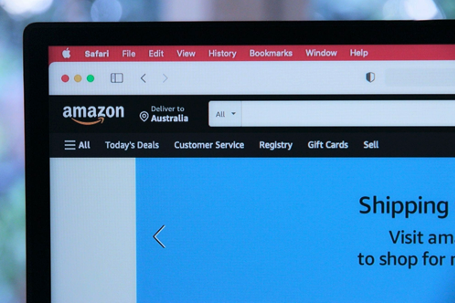
The long-term success of a business depends on the management of income, expenses, cash flow, and other vital financial statistics. Though all businesses need to keep track of their finances, Amazon businesses especially require close monitoring of their Amazon bookkeeping to survive.
Whether you are a well-versed eCommerce expert or are just starting out, you need to know that a successful Amazon seller business requires good bookkeeping. However, bookkeeping for Amazon presents some unique challenges. It differs in some ways from bookkeeping in other eCommerce businesses.
How does it differ from others, exactly what Amazon bookkeeping is, and how to handle it.
Let’s have a look at it!
What is Amazon Bookkeeping? And Why Is It Important for Amazon Sellers?

Amazon bookkeeping is the process of tracking your sales and expenses to create an accurate picture of your Amazon business’s financial health.
For Amazon sellers, bookkeeping is important because it keeps their business’s financial transactions organized.
Bookkeeping for Amazon business offers several advantages, such as:
- It reduces the risk of tax audits and penalties.
- Separate your business finances and personal finances.
- Ensure your reconciliation is error-free.
If you are skilled in the field of accounting, you can manage Amazon bookkeeping yourself. Else you can hire an Amazon accountant to handle it for you. If you’re doing it by yourself, you can use Amazon bookkeeping software to help you handle it.
Best Software for Amazon Bookkeeping
There are many great bookkeeping software that can make bookkeeping for Amazon sellers easier. However, Amazon sellers need to choose a software that fits their particular bookkeeping requirements.
Some of the top-rated Amazon bookkeeping software include.
How is Amazon Bookkeeping Different?
Amazon’s bookkeeping differs from that of other eCommerce businesses in terms of income and expenses.
Amazon Income
The Amazon marketplace follows its own policies and procedures in delivering goods and services to its customers. So, Amazon sellers may earn different incomes than regular business owners based on the orders they fulfil on Amazon.
Here is the list of income that an Amazon seller must know for accurate bookkeeping.
- Sales
- Discounts and Promotions
- Reimbursements
- Shipping Income
- Amazon Lending
- Other Income
Amazon Expenses
Similarly, to deliver goods to customers on Amazon, a seller has to incur certain expenses. The expenses are distinct from those that a normal business owner would incur.
Here is the list of expenses that an Amazon seller must know for accurate bookkeeping.
- Monthly Inventory Storage Fees
- Amazon FBA Fees
- Per Item Selling Fees
- Amazon Seller Referral Fees
- FBA Disposal Order Fees
- High-Volume Listing Fee
- FBA Removal Order Fee
- Other Fees (depends on the type of products Amazon sellers sell)
Accounting Methods for Amazon Bookkeeping
To track your Amazon sales, you can choose from the following accounting methods.
- The accrual accounting
- The cash accounting
1) The Accrual Accounting
The first accounting method is accrual accounting. The accrual accounting method records revenue and expenses as they’re earned rather than when they’re paid. With this method, you will have an accurate view of revenue and expenses over time, eliminating the volatility of cash accounting.
Accrual accounting is a necessity for businesses with inventory. The accrual method will pair transactions when your customer’s payment does not clear until the beginning of the following month so that your monthly sales are more accurate and reliable. Those Amazon sellers who want more information about their business’ financial position may find this accounting method helpful.
2) The Cash Accounting
Cash-based accounting is often used by small businesses, but Amazon FBA sellers won’t benefit from it. Revenue and expenses are recognized in cash accounting only when the transactions occur, which can be problematic for businesses that accumulate inventory.
And that can especially confuse Amazon sellers.
Considering Amazon pays every two weeks, some months may look profitable, but those profits may not be a true reflection of the sales for that month. However, when you spend a lot of money restocking your merchandise in one month, that month will appear to be a loss.
6 Steps to Handle Your Amazon Bookkeeping
Step1: Choose the Right Accounting Software
You should start your Amazon FBA bookkeeping by finding a cloud accounting software that is right for you. Using the best accounting software is easy. It runs reports quickly, improves e-commerce inventory management, and prevents mistakes. There are two types of accounting software, either single entry or double entry.
Single-entry accounting aims to write down all of your business’s transactions in a single ledger. While single-entry accounting is quick and easy, it doesn’t track liabilities or assets and can make mistakes. It also doesn’t provide much information about how your business is doing. It isn’t ideal for businesses with inventory.
In comparison, double-entry accounting is much more detailed. With this software, you can track the information you need for income statements, cash flow statements, and balance sheets. Double-entry accounting can also help you determine how much you’re making and keep track of the status of your Amazon business.
A double-entry accounting system is likely to be the best option for eCommerce accounting.
Step2: Set up a Chart of Accounts
After that, you can create a chart of accounts for Amazon’s bookkeeping. Accounting lets you keep track of where your money comes from and where it goes. But for your books to stay organized, you’ll have to categorize transactions. First, decide which categories to use. And you will need a chart of accounts for this.

The chart of accounts is a way for your business to distinguish transactions by categorizing them. It provides a broad overview of all areas of your business that spend or make money.
A chart of accounts contains five accounts, which are:
- Assets – which also has sub-accounts: Cash, Savings account, Accounts receivable
- Liabilities – sub-accounts for liabilities include Payroll liabilities, Accounts payable, Accrued liabilities,
- Shareholder’s equity – sub-accounts: Retained earnings, Preferred stock, Common stock,
- Revenue
- Expenses
The chart of accounts is created by starting with your asset accounts. Then you need to set up your liabilities. Then you proceed to shareholders’ equity. After you list your assets, liabilities, and shareholder equity, you will list revenue and expenses. Your revenue and expenses correspond to your income statement.
Step 3: Keep Track of Your Cost of Goods Sold
Next is to keep track of the cost of goods sold (COGS). This will allow you to determine your gross profit. Keeping track of the Cost of Goods Sold (COGS) can be challenging. But understanding COGS is crucial for understanding your true profits. Your Cost of Goods Sold is the amount you spend on the goods you make or acquire.

COGS is calculated by adding the cost of the item or good you bought, as well as all the costs associated with bringing the item to market. The fees, shipping, purchase price, tariff and duty payments, etc., are all items on this list.
Here are three methods to track the cost of goods sold:
- Average Cost method: ACO tracks the average cost over time of each product. Using this option, you can track costs regardless of when they were purchased.
- FIFO: FIFO stands for First In, First Out. This method makes it easy to track which products are arriving first and at the lowest price so you can sell them first.
- LIFO: The term LIFO means last in, first out. Using this inventory method, you can keep track of the newest items you plan to sell first and for the highest price.
Step 4: Record Your Entries
Now that your system is up and running, it’s time to start using it.
Maintain regular records of every transaction that involves money. You may want to schedule a specific time each week to do this. To make Amazon FBA bookkeeping as fast and clean as possible every month, the organization is key.
Step 5: Figure Out How Much Storage You Need
The most important thing to consider regarding Amazon is your storage requirements. Inventory on Amazon is arranged on a first-in, first-out basis based on how long you intend to store your product.

You will be charged a different storage fee every month based on the products you sell and other factors, including:
- amount of daily items stored at Amazon Fulfillment per month.
- month in which the product was sold.
- Dimensions and volume of your product.
- Size tier of the product.
- Is your Amazon product classified as dangerous goods?
There is an additional fee if you plan to store your products for a longer period. For products stored in Amazon fulfilment centres for more than a year, the company charges long-term storage fees.
Monthly long-term storage fees are charged based on the amount or volume of the unit. Approximately $0.15 per cubic foot, or $6.90 per cubic foot, will cover the higher amount.
Step 6: Keep a Recordkeeping System
You will be able to track your transactions more effectively if you have a recordkeeping system and streamline it over time. Here are some tips for maintaining your records:
- Keep records of expenditures and revenue.
- Separate your personal expenses from your business expenses.
- Check your records regularly, ideally twice a month.
- Keep a record of your finances.
You can print four reports based on your financial transactions: a balance sheet, an income statement, an accounts payable report, and an account receivables aging report.
When Is the Right Time to Hire an Amazon Bookkeeper?

That will depend on the size of your eCommerce business.
The longer your business continues to grow, the more profits it will make, but the less free time you will have. Accurately managing your books is important. However, it is time-consuming. If you are too busy managing your Amazon business, possibly it is time to hire an Amazon bookkeeper and leave the task to him.
If you outsource your Amazon bookkeeping, you will have more time to focus on sourcing inventory, staying on top of Amazon trends, and growing your business!
EcomBalance Is Here for You!
Being a successful small business owner means you can’t handle everything yourself. To succeed in your business, you must have reliable people and tools to track, store, analyze, and use your business finances. That being said, let EcomBalance help you!
EcomBalance is a reliable bookkeeping service for the eCommerce industry, including Amazon. We offer the best US-based bookkeeping services for growing eCommerce businesses. At EcomBalance, we’ll handle your AR and AP, pay vendor invoices, run payroll, etc. Just create a free account to contact us and get a specialized quote based on your additional requirements.
Sign Up For Your First Month Free →
About EcomBalance
EcomBalance is a monthly bookkeeping service for eCommerce companies. EcomBalance handles your bookkeeping and sends you a Profit and Loss Statement, Balance Sheet, and Cash Flow Statement by the 15th of each month. EcomBalance also has a sister company, AccountsBalance, that caters to agencies, software companies, coaches, and other online companies.









